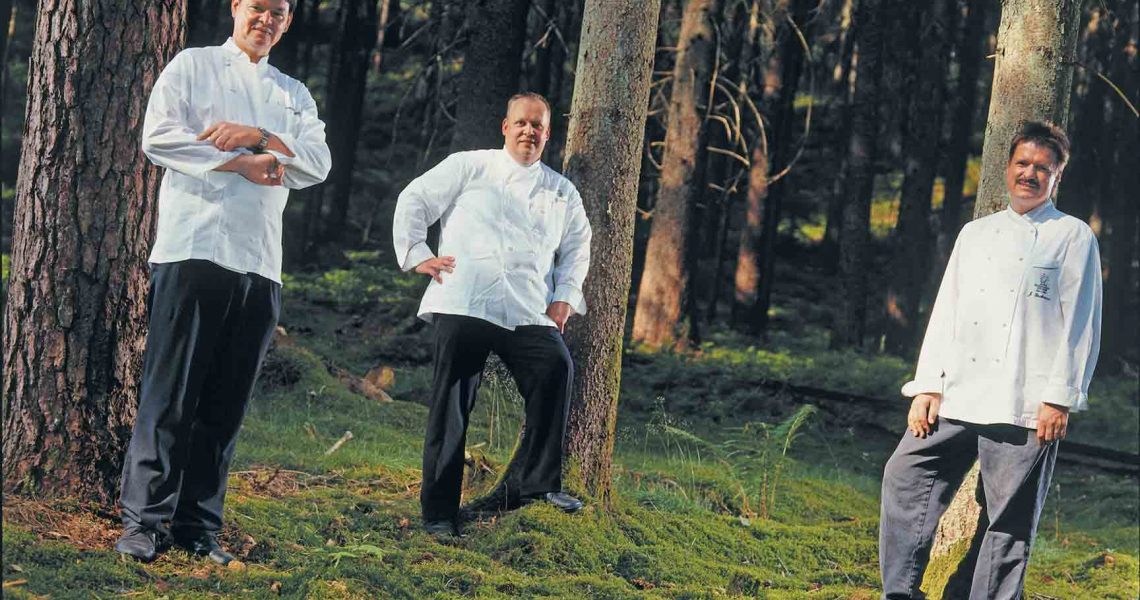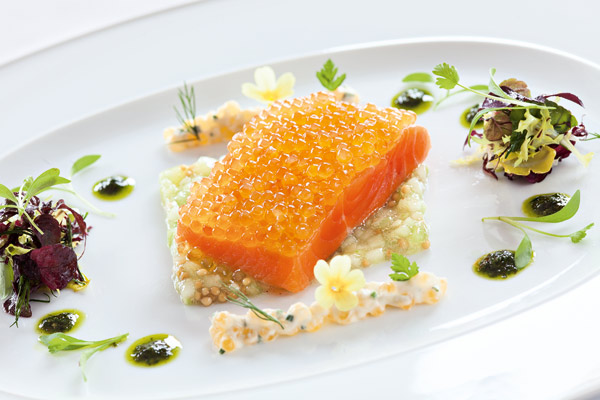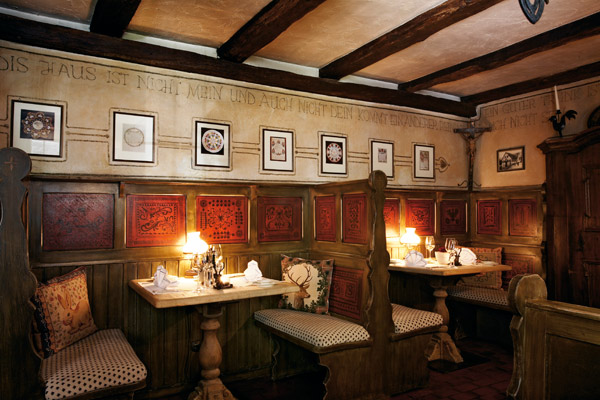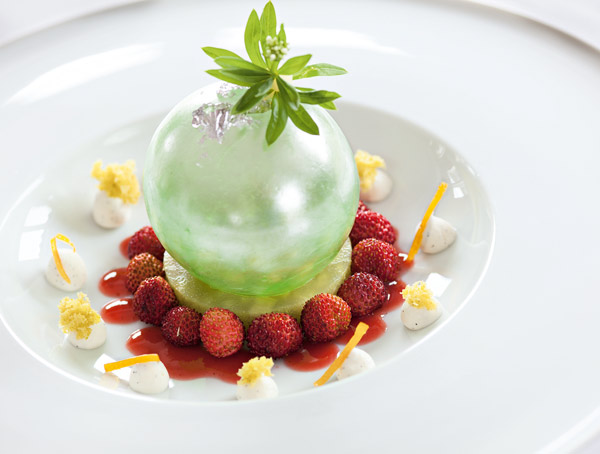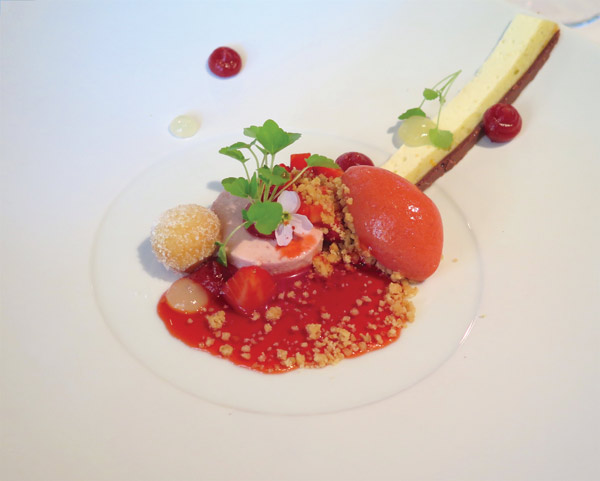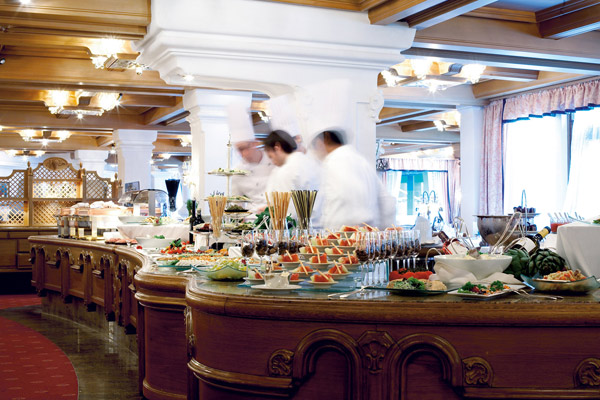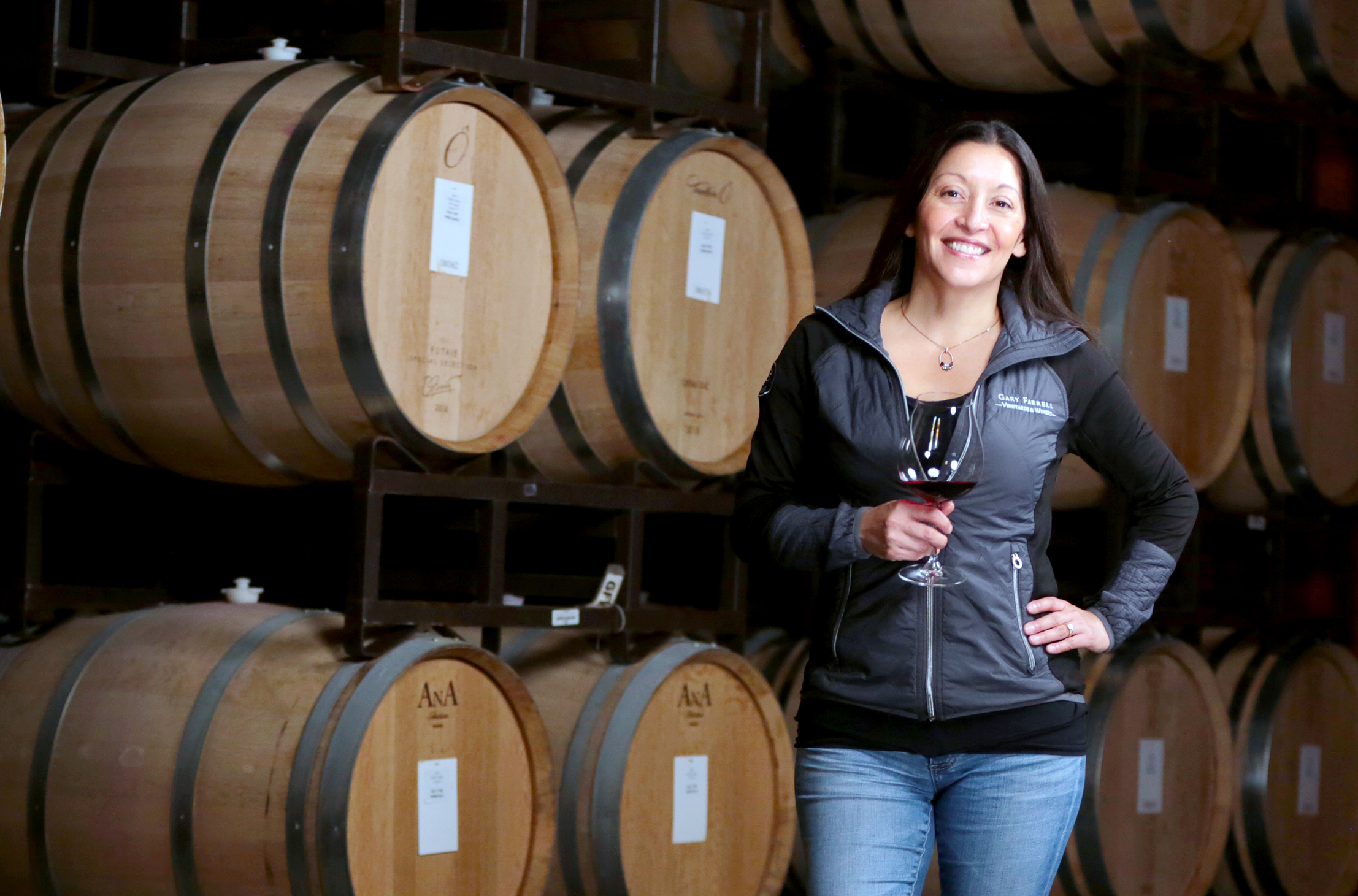Visit a remote region of Germany renowned for its culinary pedigree and explore what it takes to earn Michelin’s stellar accolades.
Published since 1900, the Michelin Guide is the oldest hotel and restaurant guide in Europe. In 1926, Michelin awarded its first stars to restaurants of note, modifying its methodology in 1931 to the current three-star classification – in which one star represents “a very good restaurant in its category,” two stars indicates “excellent cooking, worth a detour,” and three stars stands for “exceptional cuisine, worth a special journey.” Right now, there are only 124 three-star restaurants on the face of the Earth.
“The Michelin star is and always has been a difficult distinction to obtain,” explains Michael Ellis, the managing director of Michelin Guides. “To award a star, inspectors look for quality of the cuisine. We used to say that ‘stars are on the plate,’ since they used to judge only the food.” Conversely, today’s inspectors evaluate five criteria during their meals: According to Ellis, they review the quality and freshness of the ingredients; the mastery of cooking technique, the harmony and flavors of the cuisine, the expression of the chef’s personality in the dishes; regularity through the menu throughout the year; and finally, value for money.”
Michelin’s representatives are rigorous when deciding who will receive or retain their stars. “Our inspectors have used many resources to identify restaurants with the potential to be included. These sources include existing guides and articles in the press and information from local contacts during their inspection tours. As [Michelin inspectors] are anonymous, they tend to get very good local information [which] can come from hotel and restaurant employees, as well as local bakeries, butcher shops and wine merchants.”
Their process is designed to ensure fairness. “The decision to award one, two, or three stars is always made unanimously by the entire inspection team,” states Ellis. “Our decisions reflect a team decision and not the experience of one particular inspector. Michelin inspectors will return until we are all comfortable with the decision that is to be made.” One place they have agreed upon is a tiny town located deep in Germany’s Black Forest, which has more stars than the entirety of the Czech Republic and Poland combined: Baiersbronn.
Why Baiersbronn?
Though it’s a small community of nine villages with just 14,500 people, Baiersbronn (pictured, top of page) possesses the highest density of Michelin stars in the world. The surrounding landscape of the Black Forest is like something out of a Brothers Grimm fairy tale: expanses of dense silver fir forests fed by bubbling brooks and punctuated by quaint hamlets. The region has long been known for forestry, glassmaking and cuckoo clocks, but it was only in the late 20th century that it gained a cuisine reputation. That’s primarily due to a triumvirate of world-class restaurants with a total of eight Michelin stars: 3-star Schwarzwaldstube at Traube Tonbach (traube-tonbach.de), 3-star Restaurant Bareiss at Hotel Bareiss (bareiss.com), and 2-star Schlossberg Restaurant at Hotel Sackmann (hotel-sackmann.de).
“It is indeed amazing that such a small town should be blessed with two 3-star restaurants and one 2-star restaurant,” Ellis muses. “Surely there are several factors at play here. First, this is a region which has traditionally offered excellent cuisine and which is notably close to the French border. Also, the restaurants in question are situated in resort hotels, which are among the most luxurious in Germany and whose philosophy has always been to serve food of a high quality. This in turn has led to a powerful synergy between the three hotels, with their highly-talented chefs and experienced teams.”
Meanwhile, the social backstory — which includes competing hotelier families — reads like a pitch for the next Ryan Murphy TV series: Through eight generations (since 1789), the Finkbeiner family has entertained guests in the tiny town of Tonbach — first feeding them at a bakery and tavern; then (when in 1920, a lost professor from Heidelberg wandered in, lost) they began renting rooms as well. Meanwhile, in neighboring Mitteltal, a farmer’s daughter named Hermine Bareiss leased an inn to cook for French lumberjacks and eventually opened her own hotel in 1951. Not to be outdone, six years later the Finkbeiners opened the first hotel in the Black Forest that offered both bathrooms and balconies. The competition was on: Finkbeiner versus Bareiss in a battle for the hospitality crown.
Schwarzwaldstube
Michelin took notice of the area with the opening of Schwarzwaldstube at the Finkbeiners’ Traube Tonbach in 1977, an occasion that beckoned acclaimed French chefs to this remote part of the Black Forest. Harald Wohlfahrt became head chef here in 1980 and by 1992, the restaurant had garned its coveted third Michelin star. According to the current founding family member in residence, Sebastian Finkbeiner, “the addition of Michelin stars emphasized the hotel’s focus on fine dining. There was already very good cuisine in place, but of course the stars took the hotel’s reputation to an international level.”
Some chefs buckle under the pressure to keep their stars; others, like Wohlfart, dare to grasp for even loftier culinary heights. It’s a testament to artistry and discipline that the acclaimed chef has retained three stars for over two decades. Finkbeiner attests, “Chef Wohlfahrt became a role model for younger chefs.” Small wonder. Alumni of Wohlfahrt’s kitchen now hold more than 60 Michelin stars between them.
Find LGBTQ-Friendly ResourcesOverlooking the forest foothills, the 11-table Schwartzwaldstube seats 35 in sheer elegance, where dining equates with vibrant flavors and seasonal cuisine. A trio of amuse-gueules whet the palate for a meal that reflects the chef’s eye for detail and balance. Pan-fried langoustine paired with artichoke coulis and maple lime syrup evoke the brightness of spring. Served with crayfish, a chilled bouillon of vine tomato and basil foam calls to mind the best tomato to ever find a tongue. More intense flavors arrive in Ricard-flambéed pineapple and fennel confit drizzled with dill oil. For dessert, granité of cucumber and iced yogurt melds with tarragon meringue, dotted with raspberry kernels like an herbal garden in full bloom.
It’s no surprise that some 80 percent of guests at Traube Tonbach have visited the resort more than three times. Thus, management constantly reinvents the expansive property to offer returning guests something new in each subsequent visit. Dining options include four restaurants (among them, Bauernstube, (pictured, above) and a traditional hikers’ lodge that serves raclette and fondue. There’s also an outdoor saltwater pool and an ice igloo.
Finkbeiner says the stars provide employees “stimulus to prove that they can do better every day. This is not only true of the gastronomy staff: everyone within the hotel wants to be a part of the success and is, therefore, willing to contribute to the success.”
Restaurant Bareiss
Across the valley, Restaurant Bareiss opened in 1982; within a year Chef Claus-Peter Lumpp earned his first Michelin star, a second sin 1984 and a third in 2007).
A protégé of Chef Alain Ducasse, Lumpp debuted in the kitchens of the Bareiss as an apprentice — as part of Germany’s “dual-training system” which alternates rigorous education with firsthand experience. Head chef since 1992, Lumpp’s plates are presented in a room as breathtaking as his cuisine. Suffused by candlelight amidst a profusion of fresh flowers, the eight-table restaurant seems to shimmer beneath a crystal chandelier.
The amuse-bouche arrives at the table along with a crisp, dry muscatel recommended by sommelier Jürgen Fendt, who possesses a gift for choosing wines to pair with Lumpp’s cuisine. Five variations on langoustine showcase the breadth of skill at Lumpp’s command: raw and marinated with sansho, the crustacean is crowned with imperial caviar. There is also sautéed langoustine and a langoustine ragout with black Lombardy rice; and then there’s a flamed langoustine with avocado and coconut. Similarly, Lumpp reinvigorates his sea bass with culinary wizardy: first pan-fried with wild garlic; secondly, poached in olive oil; and at last, served raw with artichoke salad.
A trio of strawberry variations (pictured, above) includes strawberry cream with crisped rice, a vacherin of coconut and strawberry, and green tea lychee granité with strawberries. A post-meal trolley of treats and sweets is accompanied by a magnificent two-drawer chest of artisanal chocolates made expressly for Bareiss. And even then, there’s more: pralines and fruit jellies and petits fours — if you dare.
The addition of the restaurant’s third star in 2007 was a “very emotional moment for us,” recalls Uta Schlagenhauf, Director of Press and Public Relations for the Bareiss. “We worked a long time for this third star” with Chef Lumpp and his team “always offering the best products for cooking alongside the best service.” Upon receipt of the star, Restaurant Bareiss became fully booked with a nine-month wait for a table. “For three stars in the Guide Michelin,” says Schlagenhauf, “guests arrive from all over the world.”
According to Schlagenhauf, the restaurant’s accolades complemented the ongoing development of the hotel. An elegant country house atmosphere pervades the Bareiss. Guests choose between three restaurants, which include an original 19th-century farmhouse with various rooms serving breakfast buffets, cake buffets and midnight snacks. Fortunately, such gastronomic indulgence coexists with the hotel’s focus on health and well-being; guests may offset caloric indulgences in the expansive pool or on the region’s 300 miles of hiking trails punctuated by five glacial lakes.
The Black Forest
Black Forest National Park was established under the motto: “Let Nature Be.” Human interaction is guided to minimize interruption: trees grow, animals run free. Humans observe.
Located at an elevation of 2,300 feet, Sattelei is a traditional hiking hut that was rebuilt in 2011 and is now operated by Bareiss. After a leisurely stroll up the valley — where you’ll see wild garlic, forget-me-nots, woodland strawberries, poppies, lilies of the valley and more — Sattelei offers Black Forest hospitality from two lounges and a sunny garden (not to mention a cheesecake so light it practically defies gravity).
Patrick Schreib, Director of Baiersbronn Tourism, explains, “Alongside nature, gastronomy is one of the foundations of tourism [here]. The fact that there are eight Michelin stars attracts worldwide attention to this small village. In Baiersbronn, there is a special understanding of quality due to the fact that so many chefs trained at one of the Michelin-starred restaurants.”
Apart from the spectacular scenery and gourmet cuisine, it’s the exemplary level of service that lingers after visits to Traube Tonbach and the Bareiss. Guests in both hotels are seated at tables with place cards bearing their names. Each has a staff-to-guest ratio of better than one to one. “The Bareiss is a family-run business with a very big heart for its guests,” states Schlagenhauf. That heart is reflected in details like the glass of champagne welcoming you to your room delivered on a silver tray; petits fours that come with turndown service; a pot of coffee delivered in the morning and Herr Hermann Bareiss himself greeting guests each evening. Meanwhile, guests departing Traube Tonbach receive a gift bag of invigorating tea, appropriately dubbed “Happy Herbs.”
Beyond the cuisine and service, perhaps what speaks most emphatically to the quality of both properties is that members of their founding families still patrol the grounds like goodwill ambassadors. Their goal to each represent the best that Black Forest hospitality has to offer has resulted in an ongoing tradition of excellence. And, according to Michelin, they’ve got the stars to prove it.
Want Metrosource LGBTQ content notifications? Sign up for MetroEspresso.
Last modified: February 14, 2019

